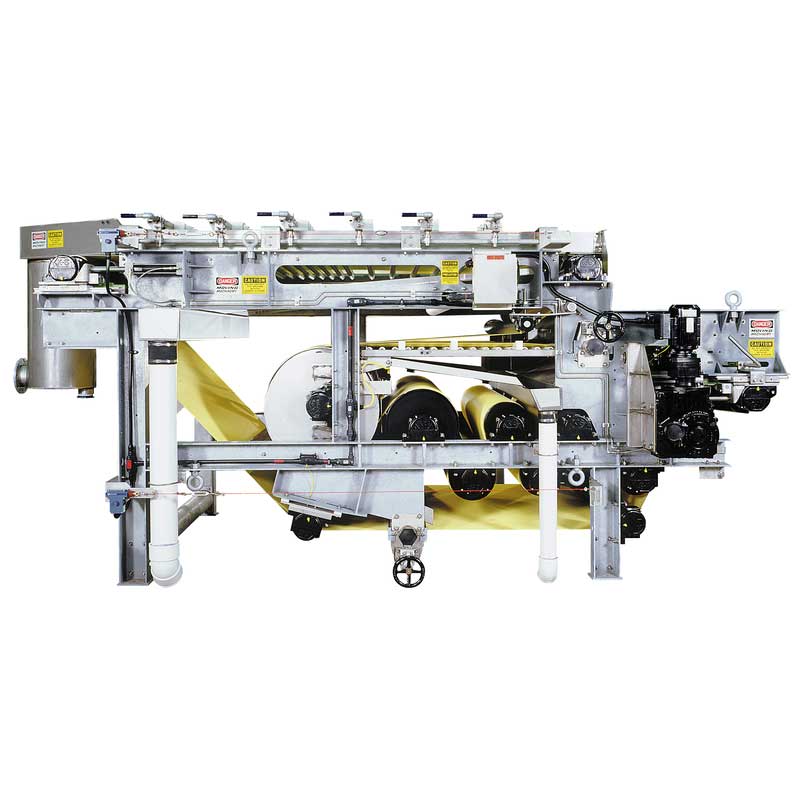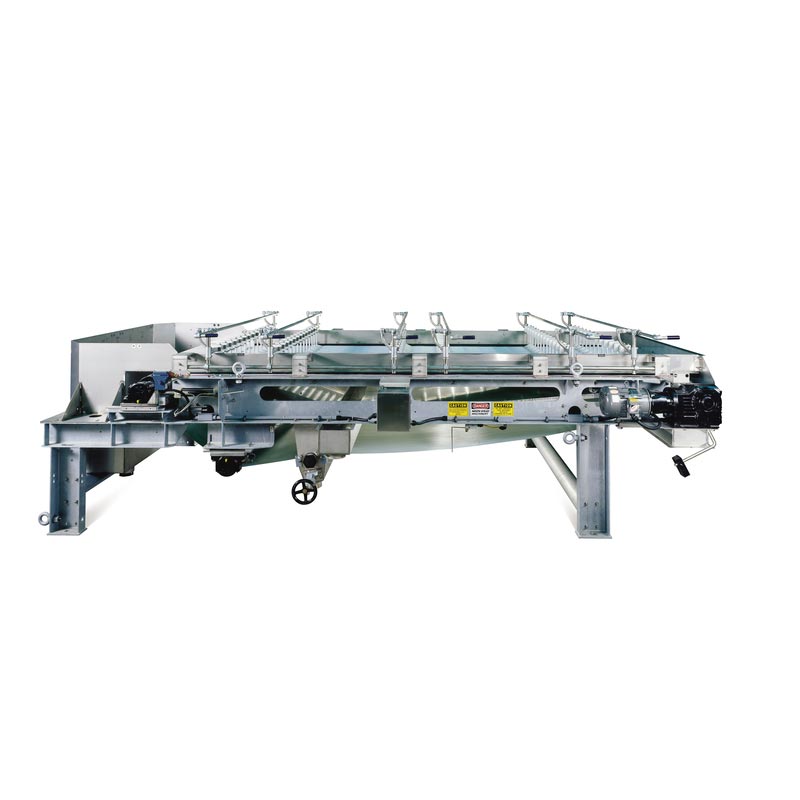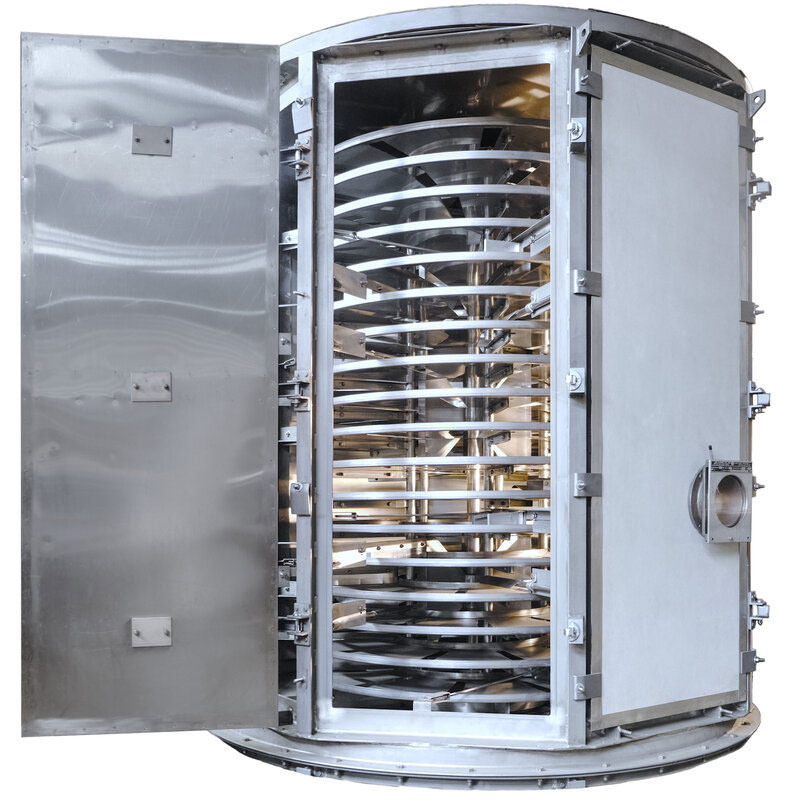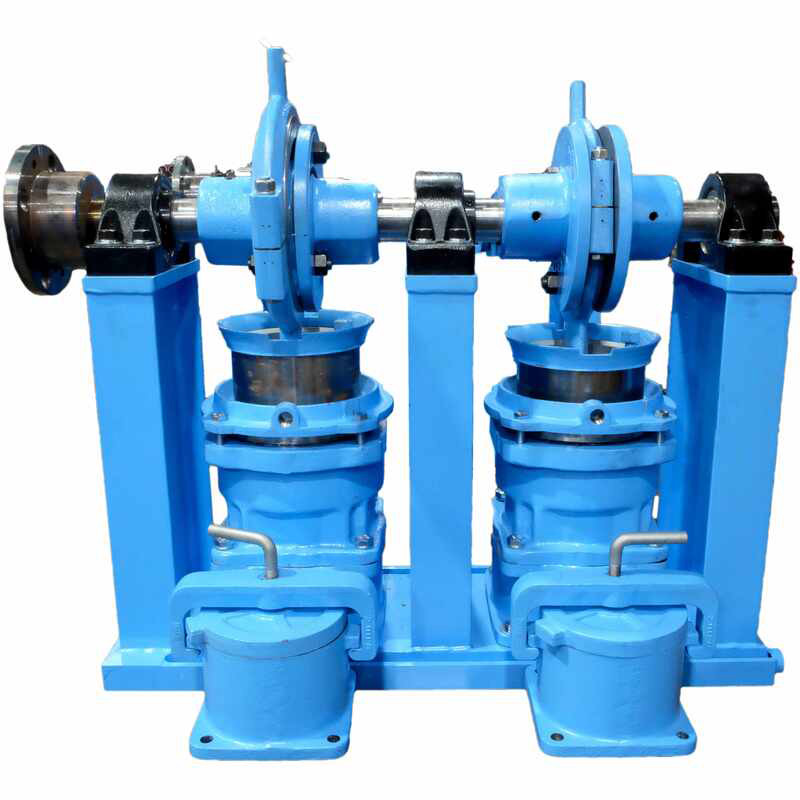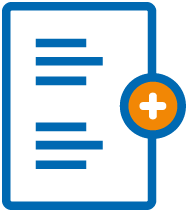Applications
Related Products
Benefits
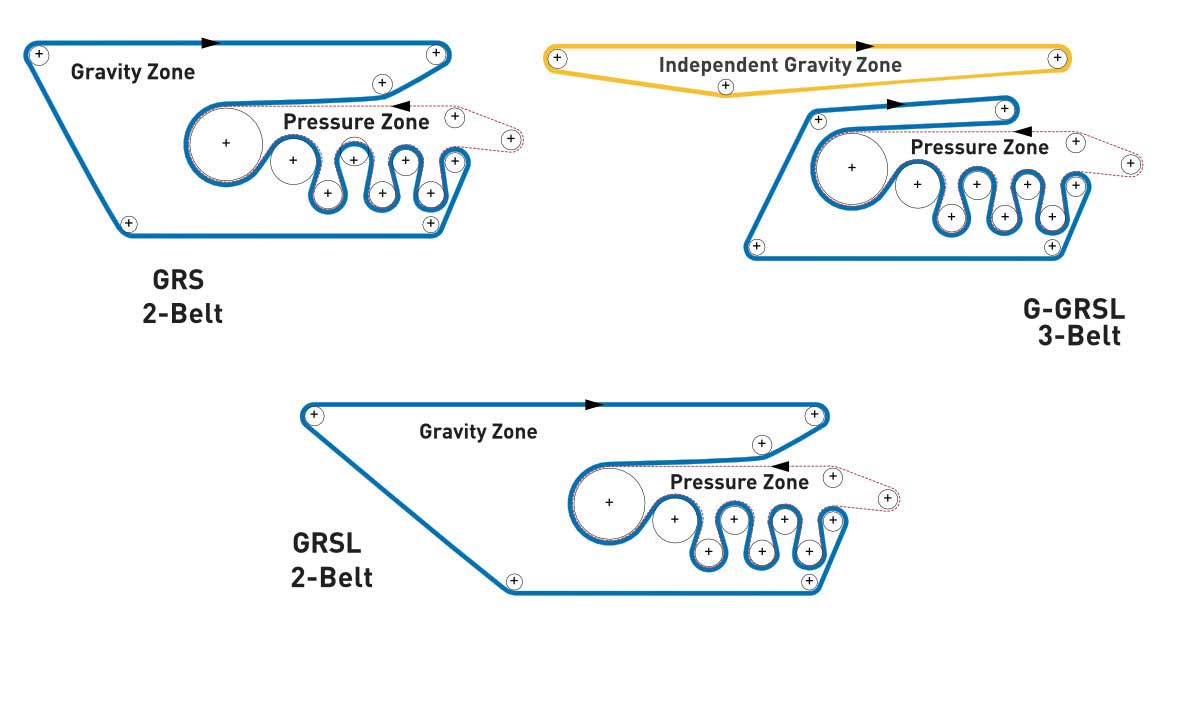
Product Range and Application
Komline-Sanderson’s Kompress® Series III Belt Filter Press is available in a three-belt (Model G-GRSL), a two-belt (Model GRS) and an extended gravity two-belt (Model GRSL) design. The three-belt G-GRSL press has an independent gravity zone with a more open belt for more rapid drainage of the volume of water. The extended gravity design has a longer gravity drainage zone. Selection of the basic machine is a function of the type of sludge and feed solids.
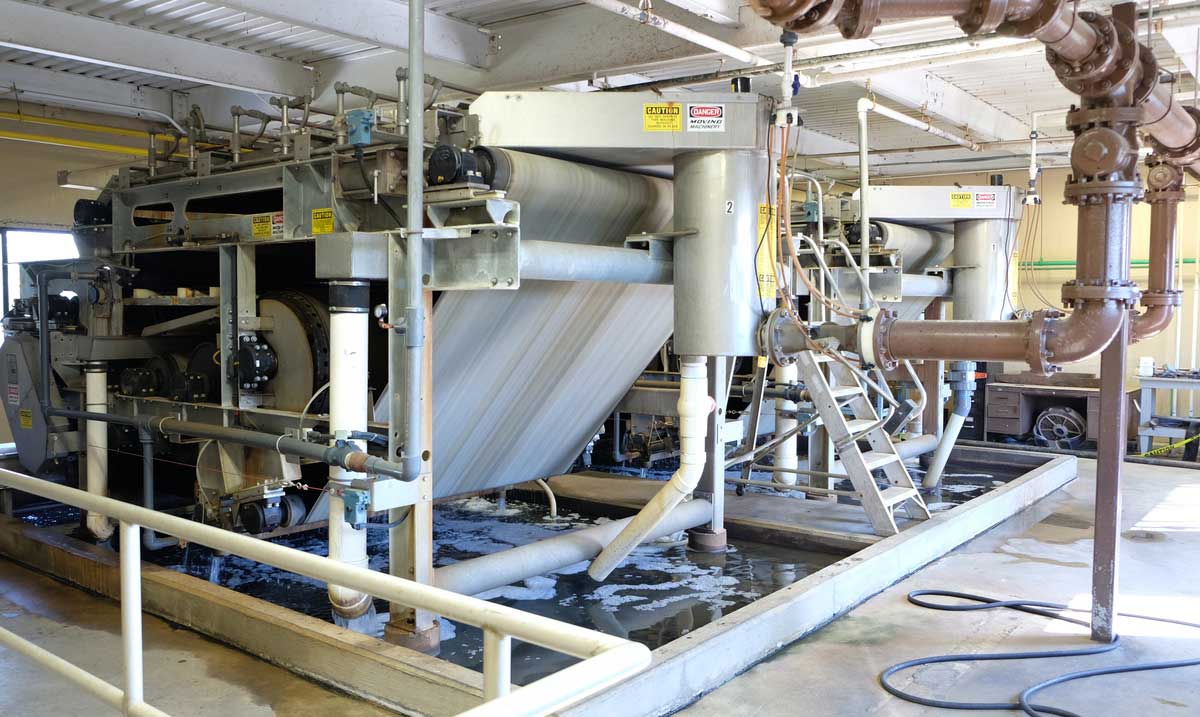
Automated Belt Filter Press
Komline-Sanderson can automate the operation of the Kompress Belt Filter Press by supplying the following options:
- Available automation includes:
- Startup and Shutdown
- Level Control
- Flow Control
- Polymer Feed Rate
- DCS interfacing
- Alarms
- Diagnostics and Trouble Shooting

Superior Features for Better Dewatering
The features that enable the Komline-Sanderson Series III Kompress to achieve substantially higher production rates and produce high cake solids at discharge are:
- The use of the Roto-Kone® technology in the gravity zone
- A wedge section with an adjustable angle of conversion of the belts
- A large initial drum in the pressure/shear zone
- An extended length pressure/shear zone
- A choice of 2 belt or 3 belt dewatering systems
- A design that allows the 3 belt design to be a combination thickener or dewatering system
- A variable orifice polymer/sludge mixing valve to optimize polymer conditioning
- Larger standard filtration areas for greater process throughput and higher cake consistency
- A patented high rate drainage system that dramatically improves filtration rates
- An easily adjustable, variable wedge compression zone that maximizes process rate and performance
- A high performance, larger to smaller drum pressure profile for higher cake solids concentration
- High quality structural frame materials and components for trouble-free, long lasting operation
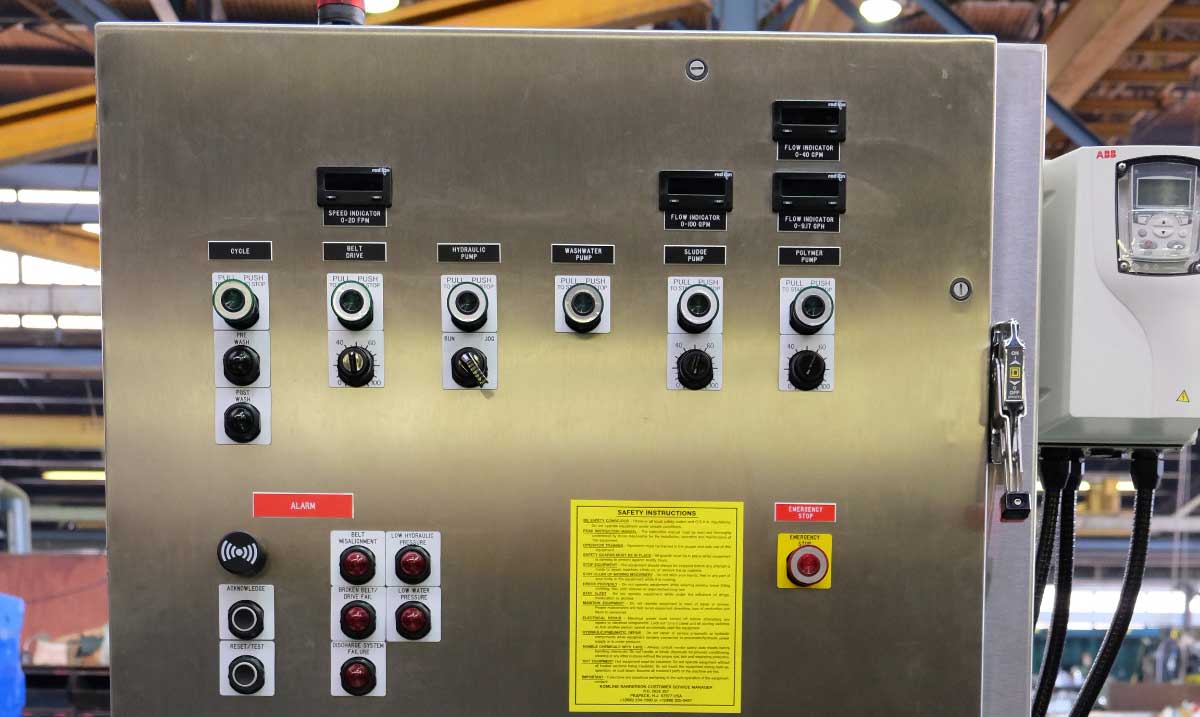
Pressure Zone
The pressure zone begins with a larger 30-inch diameter self-bailing, perforated dewatering drum designed to remove a high volume of filtrate and prevent “upset” conditions.
Because of its large diameter, large belt wrap, and perforated, self-bailing design, the initial drum extracts more water from the sludge at the inlet to the pressure/shear zone than does the conventional press and because of its internal baffle design prevents the rewetting of cake on the bottom half of the roll.
The use of this larger first drum and a succession of decreasing diameter drums gradually increases the pressure profile to a maximum dewatering force. A pressure drum profile up to a maximum of 14 drums provides an extra long pressure/shear zone with more belt area in contact with the dewatering drums and thus provides more time under pressure for more thorough dewatering than other presses of its type.
Finally, the extra long pressure/shear section provides more belt area in contact with dewatering drums and thus provides more time under pressure for more thorough dewatering than other presses of its type.
Gravity Zone
The gravity zone is available in a standard length, extended length, and independent zone designed for normal, poorly draining or dilute sludges.
The Roto-Kone® high rate drainage technology developed for enhancing the performance (higher production rates at higher thickened sludge solids) of our gravity belt thickener also has its application in the gravity section of our belt press by creating more residence time in the gravity zone thereby providing for greater drainage capabilities and higher solids concentrations at discharge. Other belt presses having standard plow systems cannot achieve equal production capabilities.
The independent gravity zone has the same capability as a stand-alone gravity belt thickener and, therefore, has application on a dilute sludge where the suspended solids are less than 1.5%. Furthermore, the complete Kompress may be designed as a combination thickening unit/dewatering unit. In the thickening mode, a doctor blade is engaged at the discharge roll to remove thickened solids from the gravity belt. In the dewatering mode, the doctor blade is retracted to allow the thickened sludge to enter the wedge zone.
Wedge Zone
The adjustable wedge provides a gradually applied increasing pressure as the solids approach the first dewatering drum. Pressure is applied by the upper tensioned belt by moving the wedge zones entrance roller. This reduces or eliminates solids migration beyond the belt edges which can occur on conventional press designs.
Videos
RotoKone Overview
This video demonstrates the exceptional performance of the Komline-Sanderson RotoKone technology.
K-S Kompress Belt Filter Press Overview
This video is an overview of the K-S Kompress® Belt Filter Press.
Kompress Design
- High quality structural frame materials and components for trouble-free, long lasting operation.
- K-S custom designed and built instrumentation/controls for guaranteed system integrity
- Outstanding operating features and technology advances for higher throughput capacity, lower operating cost, and easier maintenance
- Highly efficient gravity zone with Roto-Kone® elements and Roto-Trak® plows that work sludge to promote rapid drainage
- Feed section features flocculation tank and feedbox to uniformly apply sludge across entire width of belt while eliminating uneven distribution
- Rack and pinion tension controls links both ends of take-up roll to assure parallel belt movement and prevent uneven belt tension
- Self-bailing perforated first dewatering drum eliminates rewetting of the cake through removal of water from inside the drum
- Gravity and wedge zone belt support bars are made of abrasion-resistant polyethylene and enhance dewatering by breaking surface tension of liquid
- Heavy-duty 10x frame is 3/8″ carbon steel hot dipped galvanized after welding. 304 and 316 stainless steel frames are available
- Patented lifting mechanism in the high rate drainage system facilitates raising and lowering of plows and elements into or out of service
- Built in safety rope surrounds the entire system for emergency shutdown. Additional automatic shutdown controls stop the system for low pneumatic/hydraulic pressure, gross belt misalignment or broken belt, drive failure or low belt wash pressure
- Continuous belt washing is provided by fully enclosed wash stations with high pressure SS spray nozzles, internal cleaning brushes, special seals to eliminate noise and overspray, and access panels for convenient maintenance
- Variable wedge compression zone can be easily adjusted during operation to set a dewatering gap that maximizes material process rate and performance
- Replaceable polypropylene discharge blades extend over entire belt width and are counterweighted. Dry cake discharge is standard with optional discharge for thickened, pumpable sludge
- Heavy duty split pillow block spherical roller bearings are all one size. A highly effective sealing arrangement protects bearings from external contaminants and water
- A choice of 2 or 3 belt dewatering systems with standard, extended, or independent gravity zones for consistently high cake solids in varying sludge conditions
- 2-belt system with standard gravity zone (GRS)
- 2-belt system with extended gravity zone (GRSL)
- 3-belt system with independent gravity zone (G-GRSL)
FAQs
Q:
Are testing facilities available?
A:
Yes, we maintain a laboratory in Peapack, New Jersey, where 5-gallon representative samples of sludge may be sent to determine expected belt press performance.
Q:
Do you supply a polymer feed system with the Kompress?
A:
Yes, we can supply not only a polymer feed system but also discharge cake conveyors and sludge feed pumps to make a complete dewatering system.
Q:
Do you provide extended warranties on the Kompress belt filter press?
A:
Yes, warranties up to five years can be provided on the frame, pressure rolls and bearings.
Q:
Can the electrical control panel be designed for an Ethernet or Scada System?
A:
Yes, all of our electrical control panels are provided with a PLC. Higher level PLC’s are included when the belt press must be included in an Ethernet or Scada System. Operator interface terminals may also be included in the electrical control panel.
Q:
Do you have recommended sizing and system design information?
A:
Yes, a complete design manual, with drawings, is available.

